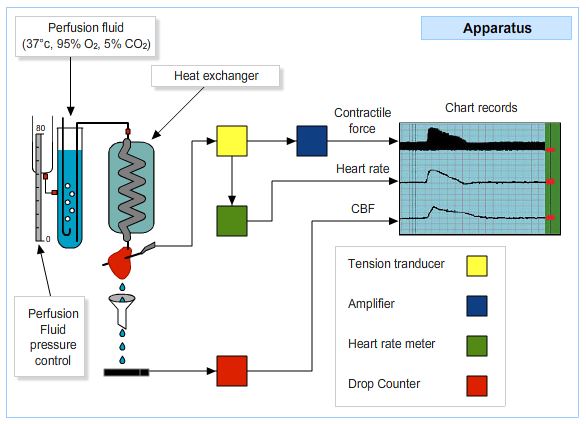The Langendorff Preparation
Langendorff preparations using the heart of a rat, guinea pig, rabbit and cat have been described frequently though the rabbit or guinea pig preparations seem to be those most widely used in teaching.
This section deals with a number of aspects of the method.
Preparation of the Animal
The animal is pretreated with the anticoagulant heparin, anaesthetized, and a tracheal canula inserted for ventilation. The thorax is opened, the pericardium removed and the ascending aorta freed from surrounding connective tissue. A cannula is inserted into the aorta and coronary perfusion initiated. The inferior vena cava is clamped and the pulmonary artery incised. Retrograde perfusion closes the aortic valve and the perfusate passes into the coronary vessels and out via the coronary sinus and inferior vena cava.
The chambers of the heart are essentially empty throughout the experiment. The heart muscle does very little work and there is no real cardiac output.
Finally the heart, which is now attached to the cannula is removed from the animal and transferred to the constant pressure perfusion apparatus. It should then be left for 15-30 minutes to adjust to the in vitro conditions. Several perfusion fluids have been used e.g. Krebs-Henseleit, Tyrode and Locke saline solutions, and McEwen's Ringer solution. The fluids are oxygenated, filtered and equilibrated to pH 7.4. This method greatly reduces the possibility of myocardial damage due to ischaemia and is preferable to removal of the heart from a freshly killed animal.
Apparatus
